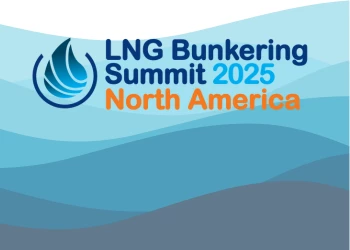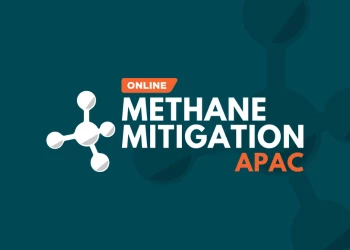What Are MOPUs and FPSOs?
How do the differences between these production facilities stack up?
Add bookmark
Defining MOPUs
A Mobile Offshore Production Unit is any type of portable structure that can be reused when procuring oil and gas from the seabed. These are typically used when the depth of drilling is over 500m. If the water is any shallower, then fixed platforms are constructed.
The MOPU classification includes all types of FPSO vessels, as well as spar and tension leg platforms, jack-ups, semi-submersible production units, and production barges.
Defining FPSOs
A Floating Production, Storage, and Offloading vessel is a ship used to process and store oil and gas. These vessels are moveable platforms, but unlike some other MOPUs are usually housed in tankers. This makes them perfect for taking advantage of fields with shorter life expectancies, and for moving between smaller sites.
They are a cheap and agile alternative to the installation of expensive pipelines in areas that will only yield fuel for short periods of time.
FPSOs are often moored by using central or spread mooring – single mooring lines or multiple – and can operate in any depths, including ultra-deepwater (3km+).
Whilst not strictly FPSOs, similar vessels include FSOs (storage and offloading), FPSs (production), FSUs (storage), FLNGs (LNG fuels), FSRUs (regasification), and FDPSO (drilling, production, storage, and offloading).
READ: An Introduction to the Oil and Gas Industry
What are SPARs?
SPAR platforms are floating oil platforms which use long cylindrical buoys to remain afloat. They are most common in the Gulf of Mexico.
- There are three types of SPAR platform: classic, featuring a large upright cylindrical hull; truss, which included an open truss section at the bottom of the hull; and cell, made up of seven hollow tubes.
- There was ever only one cell SPAR, Red Hawk, which was decommissioned in 2014 after ten years of production.
- The world’s first SPAR was Neptune, built in 1997 in the Gulf of Mexico by Anadarko – to a depth of just over 500m
- Shell’s Perdido, built in 2010, is the deepest SPAR in the world, moored at a depth of 2,450m.
What are TLPs?
Tension leg platforms, or TLPs, are buoyant platforms kept stable by high-tension moorings, or tendons. They are also sometimes included in the fixed platform group due to their tight moorings functioning almost as rigid legs.

These moorings link the hull to a template affixed to the sea bed. Most TLPs feature a hull kept buoyant by four air-filled columns, much like a semi-submersible.
- The first TLP to be constructed was ConocoPhillips’ Hutton, installed in the North Sea in 1984.
- The world’s deepest TLP is Chevron’s Big Foot, moored at a depth of just over 1,500m in the Gulf of Mexico. Big Foot became operational in 2014.
- Typical platforms boast a surface facility of around 6,000m², a staff complement of up to 100, and a production maximum of around 150,000 BPD oil, and 400 MMscfd gas.
- TLP tendons are usually 1m-diameter 3-inch steel tubes, and there are at least 10 tendons per platform.
What are Jack-ups?
Whilst more common as MODUs (Mobile Offshore Drilling Units), jack-up rigs are also a type of MOPU.
These platforms do not float, but feature self-elevating legs which extend downwards, raising the main body of the vessel above sea level once the legs hit the seabed.
This provides a mobile and stable shallow water source of production.
- Jack-ups can feature open-truss legs or columnar legs – the latter of which are cheaper to manufacture, but less stable. Columnar-legged jack-ups are therefore only used in depths of less than around 75m.
- Jack-ups can be moved, retrofitted, and properly prepped for production far quicker than site-specific structures, and are often converted from older vessels.
Semi-submersibles
Semi-submersible platforms are the most stable floating MOPU, and have hulls that are partially submerged when in position. There are two main types: bottle – consisting of bottle-shaped hulls that are submerged to the ocean floor, and column – consisting of two horizontal columnar hulls that are only submerged a few metres below the water line, and then moored to the sea bed with mooring lines. The latter type is more stable, and the more recent advancement.
- The first semi-submersible was the Argyll FPU, converted from a MODU in 1975 and operating at a depth of 150m in the North Sea.
- Anadarko’s Independence Hub, installed in the Gulf of Mexico in 2007, is the world’s deepest operational semi-submersible – producing fuel whilst moored in seas nearly 2.5km deep.
MOPUs and FPSOs in numbers
MOPU is a broad term encompassing FPSOs and various other floating production units. Global trends of MOPU placement are as follows.
|
Region |
FPSOs |
Semi-FPSs |
TLPs |
SPARs |
|
Canada |
2 |
- |
- |
- |
|
Gulf of Mexico |
4 |
9 |
16 |
17 |
|
Brazil |
31 |
20 |
- |
- |
|
North Sea |
21 |
14 |
2 |
- |
|
North Africa |
4 |
- |
- |
- |
|
West Africa |
39 |
1 |
6 |
- |
|
India |
1 |
1 |
- |
- |
|
Australasia |
15 |
- |
- |
- |
|
China |
17 |
1 |
- |
- |
|
Southeast Asia |
22 |
1 |
1 |
1 |
Case studies
The process of commissioning, constructing, or converting MOPU vessels is arduous, expensive, and complicated.
With MOPU numbers increasing year-on-year, further developments to column types, construction processes, and operational areas are expected. We examine five MOPU case studies to give an overview of the process.
FPSO: Petrobas 63
In 2012, the tanker Nisa was converted to the Petrobas 63 FPSO vessel – a joint venture between Chevron and Petrobas. Completed in 2013, P63 currently has the capacity to process 140,000 barrels of oil per day, and close to one million m³ of natural gas. Constructed in 1983, the former crude oil tanker has a draught of 7.5m and an average speed of 12.7 knots.
Over the year of conversion, 23 process plant modules were installed, and at the height of work, 1,500 people were working on the construction of the new FPSO vessel. P63 is the sole vessel dealing with the production of the P61 platform – itself covering 30 oil-producing wells.
SPAR: Perdido
In 2010, Shell’s Perdido SPAR became operational. Situated at a depth of 2,450m in the Gulf of Mexico, it is the deepest SPAR in the world.
The Perdido project had to tackle the issue of not only water depth, but also extremely low temperatures in oil reservoirs.
At its peak, it is capable of producing 100,000 barrels of oil per day and 5.5 million m³ of gas, and is responsible for production in the Great White, Silvertip, and Tobago fields.

Constructed in Finland and moved to the Gulf of Mexico in August 2008, Perdido processes oil found at depths ranging from 2km to 2.8km.
TLP: Heidrun
In 1995, Conoco’s Heidrun began production roughly 200km off the coast of Norway and at a depth of 350m. It was the first concrete-hulled tension leg platform, constructed using a light aggregate. The platform manages a template of 56 well slots and is tethered by 16 steel tubes. Fuel in the Heidrun field is recovered using a mix of water and gas injection, and the TLP is serviced by an FSU and two shuttle tankers.
Jack-up: Rowan Joe Douglas
Constructed in the US in 2012, the Joe Douglas is a jack-up drilling vessel operated by BP. The rig can deploy in depths up to 100m, with legs 150m in length. It accommodates 108 members of staff, and can drill down to a maximum depth of 10km.

The rig is almost symmetrical, with a width of 67m and a length of 69m. It has a maximum drilling payload of 9,433,000lbs and is now operating in Trinidad and Tobago after an extension of Rowan’s contract with BP.
Semi-submersible: Atlantis PQ
Continuing BP’s work in the deepwater of the Gulf of Mexico, the Atlantis PQ semi-submersible was launched in the then recently-discovered Atlantis field in 2007. Operating in water depths exceeding 2km, the Atlantis was the deepest-moored semi-submersible in the world before being overtaken by Anadarko’s Independence Hub. Following the Deepwater Horizon disaster, a lawsuit was filed against BP Atlantis claiming health and safety malpractice, but it was eventually dismissed.
Atlantis PQ has a tonnage of 31,000 tonnes and displaces nearly three times that – at 89,000 tonnes. It has a processing capacity of 200,000 barrels of oil per day, and 180 million cubic feet of gas per day. It currently sits roughly 150 miles south of New Orleans.
Join senior oil and gas industry leaders to learn about the latest developments in the energy sector at our upcoming events:
Connected Worker: Energy Summit
March 18-20, 2025 | Houston, TX
AI in Energy Summit
February 24-25, 2025 | Houston, TX





















